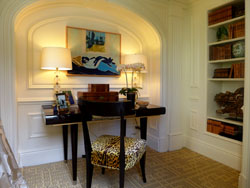Take Your Pics!
 Nova Bronstein
Nova Bronstein  Sunday, November 13, 2011 at 9:00AM
Sunday, November 13, 2011 at 9:00AM  For those of us who are just not natural shutterbugs, getting started with taking pictures can be a bit intimidating. If you are a jewelry designer, or really any kind of maker, you are likely creating new work all the time. Being able to take the pictures yourself to document work makes a huge difference both in efficiency and cost. Often, a natural response to this situation is to arm oneself with an expensive camera. Well, the best answer may surprise you...
For those of us who are just not natural shutterbugs, getting started with taking pictures can be a bit intimidating. If you are a jewelry designer, or really any kind of maker, you are likely creating new work all the time. Being able to take the pictures yourself to document work makes a huge difference both in efficiency and cost. Often, a natural response to this situation is to arm oneself with an expensive camera. Well, the best answer may surprise you...
A new student eager to start taking her own pictures was describing to me the camera she owned-- a 12 Mega pixel Digital point and shoot camera-- which she hadn't had success yet in using and was wanting to know if she should invest in an SLR camera instead. Santa is making his rounds shortly, so it seemed like a particularly good time to contemplate this...

This is a a very good question and one I have pondered myself. Before answering, I have to say that there is not a right or wrong answer here. And it's important to keep the big picture in mind. Meaning, if funds are unlimited than it's one thing, but if they aren't than you might want to factor in where "Santa" can do the most for you. It's easy to be excited about ones craft and feel it's necessary to invest in it. But, is spending $1000 - $2000 on a new camera the best use of your current resources? Will a camera benefit your jewelry (or other craft) endeavor the most? Maybe yes, maybe no. Only you know the right answer given your situation.
I personally have a similar camera-- a Canon Powershot, a 600-- not as nice as the 12 mega pixel owned by the student-- with macro setting and decent resolution which which I got 3 years ago and has been fine for me up to this point. I have been very happy with the result which I have been mainly utilizing for online uses. As I transition to needing pics for printed matter I will have to re-visit this question and may likely come to a different conclusion.
Now to get to the meat of it...
The Point + Shoot:
These are great for Etsy postings or any online purpose. The camera mentioned can definitely produce some great pics for this purpose. If contemplating the point and shoot vs. SLR question yourself, I would suggest working with the camera you have for two to three weeks with the goal of really trying to master your camera before making a decision. Doing this will get you started with learning how to successfully take pictures of your work as well as helping you to make your decision. Getting to know your current camera will also help you to appreciate the difference made by your camera up-grade should you decide to take the plunge with an SLR.

The SLR with Macro Lens/ Close-Up Lens:
For a good SLR camera you can expect to pay in the $500 - $1000 range. The real advantage for the SLR is if you are going to be printing your images. This is when you really need a high resolution pic. If most of what you are doing with your images is online -- which is all at 72 dpi -- than you may want to spend money on your beads, stones, pearls, wire, or other materials instead.
Now, the flip side is that an SLR can take gorgeously crisp images, especially if paired with a macro lens. The macro lens, which can run as expensive as the camera itself (in the $500 and up range), is what is going to give you that nice zoomed-in functionality. I've been informed by my fellow peers from the New York Institute of Photography-- Sheffield's sister school-- that a less expensive option is a close-up lens which screws onto the front of the camera. These are priced in the $50-$150 range and will help with your close up shots, but does not have the same degree of crispness as can be achieved with the macro lens.
 There are lots of great SLRs out there to choose from if you decide to go this route, but you will have to do some investigating on your own about which one as I am not in the photo biz myself and am rather a "by necessity" photographer.
There are lots of great SLRs out there to choose from if you decide to go this route, but you will have to do some investigating on your own about which one as I am not in the photo biz myself and am rather a "by necessity" photographer.
Some tips for getting more out of any camera:
- You may want to try one of those Gorillapod (mini tripods) as they are really small and malleable, allowing you to get really close to the piece while eliminating any "shake" created by you holding the camera. This is particularly helpful for taking pictures of jewelry as the luster and clarity can be difficult to capture with such reflective materials.
- You also may want to use the self-timer for taking shots. Get everything set in terms of positioning, macro on, flash off, etc then set. This can greatly improve the focus on images as your hands are not on the camera when the picture snaps.
- Also, check your images frequently while shooting, paying attention to what you did to get your most successful images. But most importantly keep experimenting! For example, in getting to know my camera I was surprised that --even with the macro setting turned on-- the pictures I took that were slightly farther away from the piece were sharper than ones where I was closer. This has to do with where your camera likes to focus and varies per camera.
An SLR is a big expense so it's important to weigh the decision carefully! And you may find that with some additional pointers in approach for taking pictures in general that you can find greater success with the camera you already own!
No matter what your decision I hope that you experiment. Take pics in different light and distances until you find the "sweet spot" for your camera. This will take some trial and error regardless of your equipment. And, lastly, Good luck!
Interested in making some of your own smashing jewelry? As a jewelry design instructor at the Sheffield School in New York, I encourage you to take the matter of making into your own hands! Check out the newly launched Jewelry Design Course offered at the Sheffield School. With thousands of active students and more than 50,000 graduates, Sheffield has trained more design professionals than any other school in the world.
- Request a free Sheffield School catalog describing our distance education courses.
- Subscribe to the Sheffield Designer newsletter.




Reader Comments (20)
-Nova
With that being said I have researched and found 2 Cameras that "fit the bill" for this. The Panasonic Lumix DMC LX 5 is Known as a Bridge Camera. More advanced than a regular digital camera but, not as advanced as an SLR. It kind of fills in the gap between the 2 Camera Styles.
If, you are looking into SLR's but are a little hesitant with something more complicated and expensive, the Nikon D5100 is probably the easiest crossover to learn and operate of any SLR's.
Thanks again for your great blog!
Meredith Van Dyck
www.streetarticles.com/electronics/digital-camera-reviews-2011 www.streetarticles.com/electronics/digital-camera-reviews-2011
www.streetarticles.com/electronics/digital-camera-reviews-2011
i hope you also make a post or tutorial about how to take picture in outdoor.
wholesaleturf.com